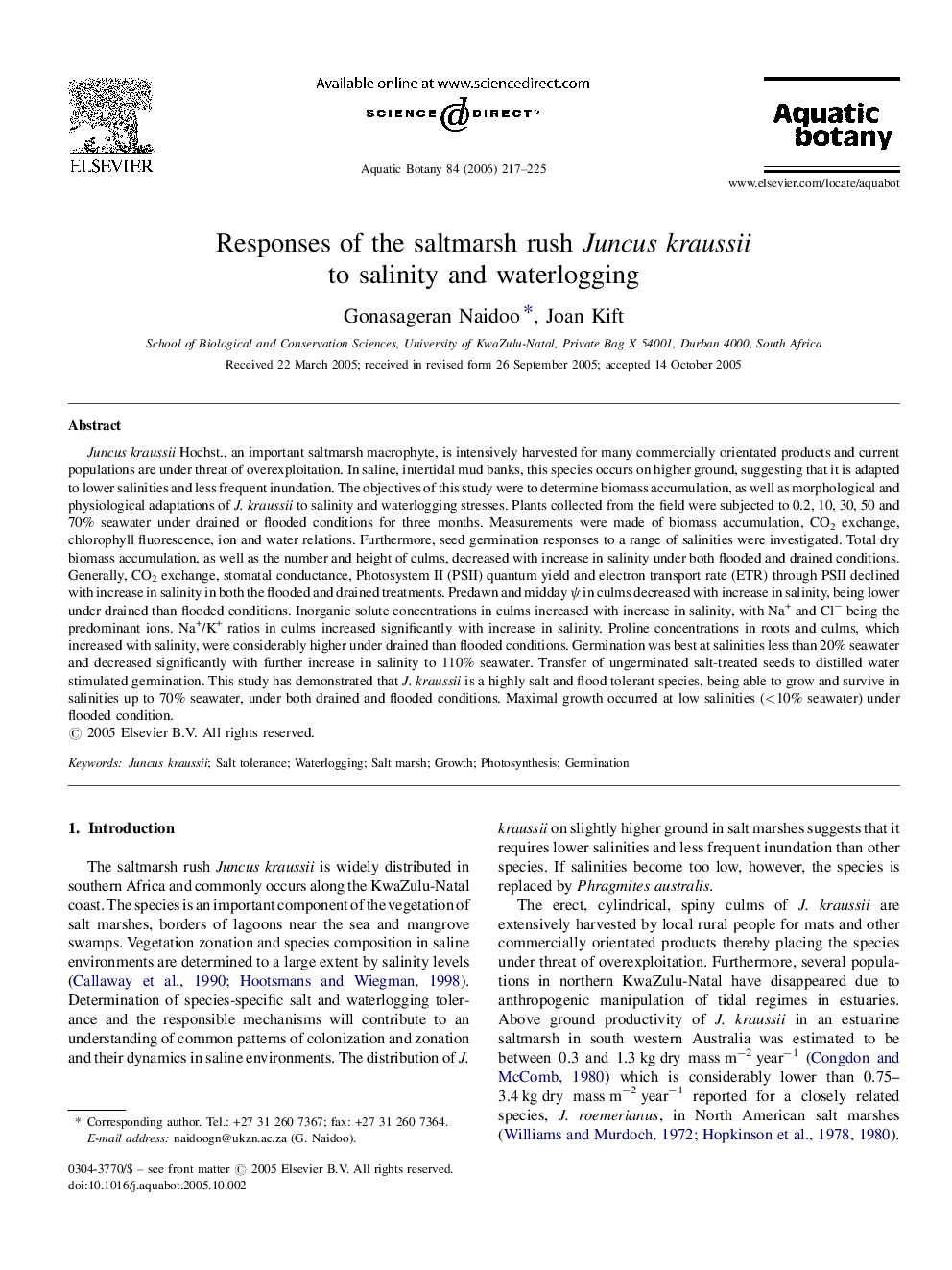| کد مقاله | کد نشریه | سال انتشار | مقاله انگلیسی | نسخه تمام متن |
|---|---|---|---|---|
| 4528801 | 1324333 | 2006 | 9 صفحه PDF | دانلود رایگان |

Juncus kraussii Hochst., an important saltmarsh macrophyte, is intensively harvested for many commercially orientated products and current populations are under threat of overexploitation. In saline, intertidal mud banks, this species occurs on higher ground, suggesting that it is adapted to lower salinities and less frequent inundation. The objectives of this study were to determine biomass accumulation, as well as morphological and physiological adaptations of J. kraussii to salinity and waterlogging stresses. Plants collected from the field were subjected to 0.2, 10, 30, 50 and 70% seawater under drained or flooded conditions for three months. Measurements were made of biomass accumulation, CO2 exchange, chlorophyll fluorescence, ion and water relations. Furthermore, seed germination responses to a range of salinities were investigated. Total dry biomass accumulation, as well as the number and height of culms, decreased with increase in salinity under both flooded and drained conditions. Generally, CO2 exchange, stomatal conductance, Photosystem II (PSII) quantum yield and electron transport rate (ETR) through PSII declined with increase in salinity in both the flooded and drained treatments. Predawn and midday ψ in culms decreased with increase in salinity, being lower under drained than flooded conditions. Inorganic solute concentrations in culms increased with increase in salinity, with Na+ and Cl− being the predominant ions. Na+/K+ ratios in culms increased significantly with increase in salinity. Proline concentrations in roots and culms, which increased with salinity, were considerably higher under drained than flooded conditions. Germination was best at salinities less than 20% seawater and decreased significantly with further increase in salinity to 110% seawater. Transfer of ungerminated salt-treated seeds to distilled water stimulated germination. This study has demonstrated that J. kraussii is a highly salt and flood tolerant species, being able to grow and survive in salinities up to 70% seawater, under both drained and flooded conditions. Maximal growth occurred at low salinities (<10% seawater) under flooded condition.
Journal: Aquatic Botany - Volume 84, Issue 3, April 2006, Pages 217–225